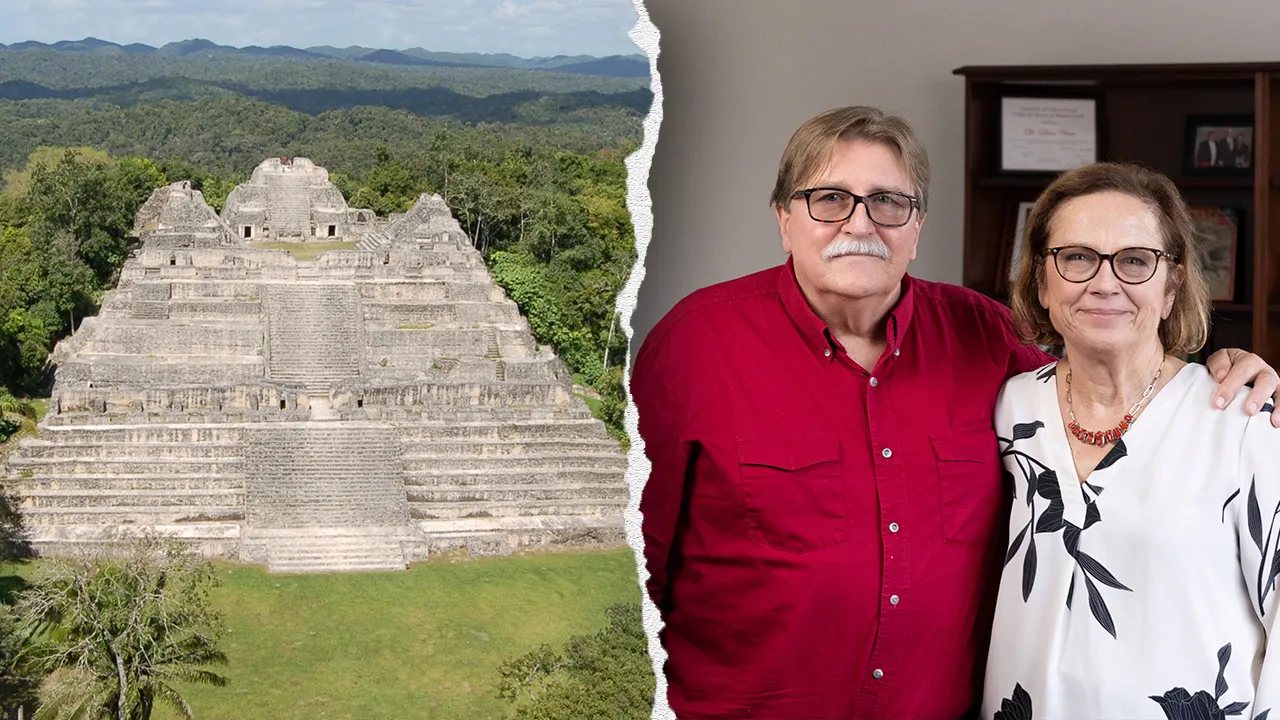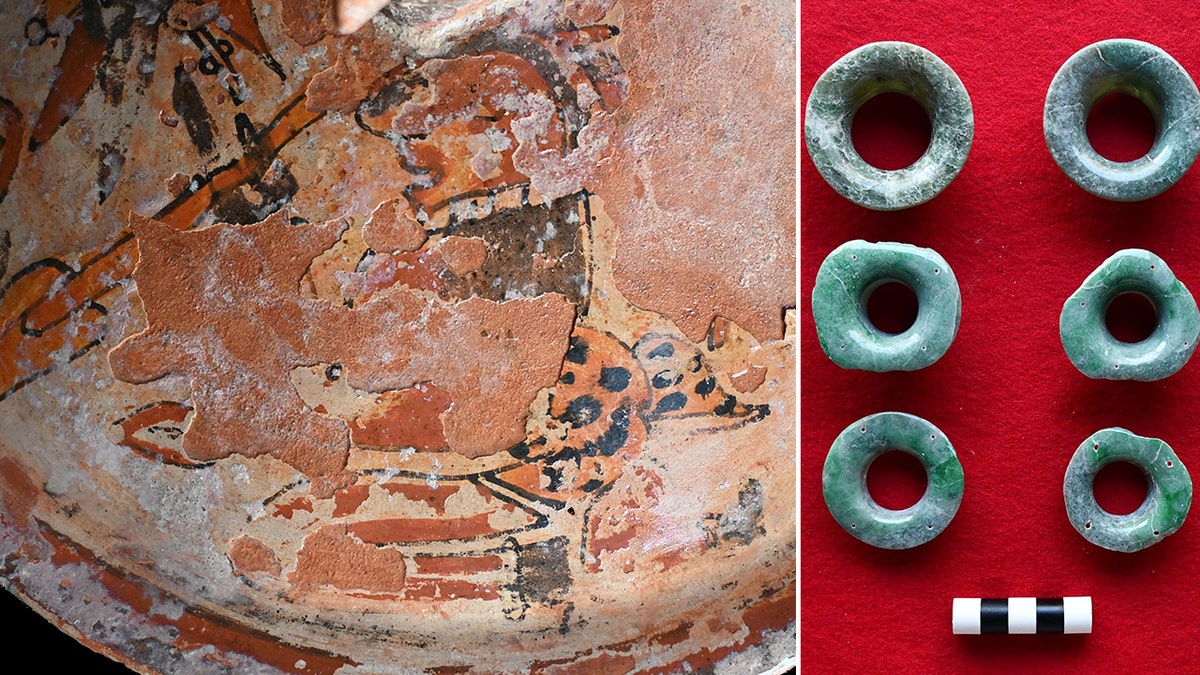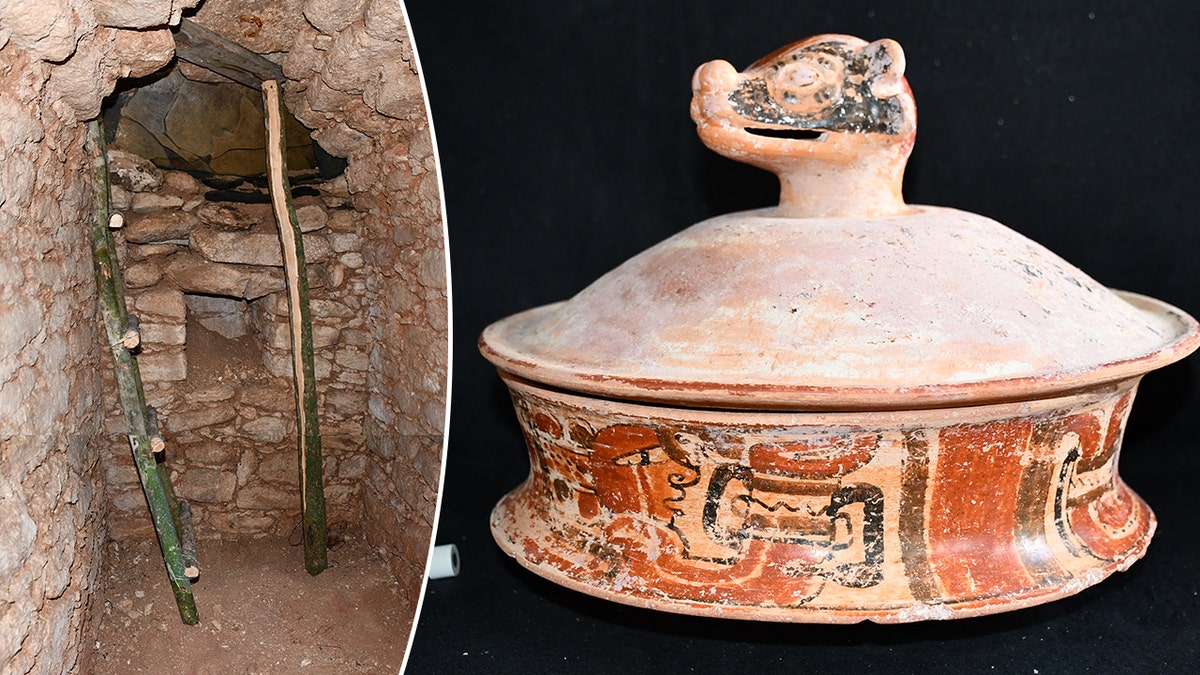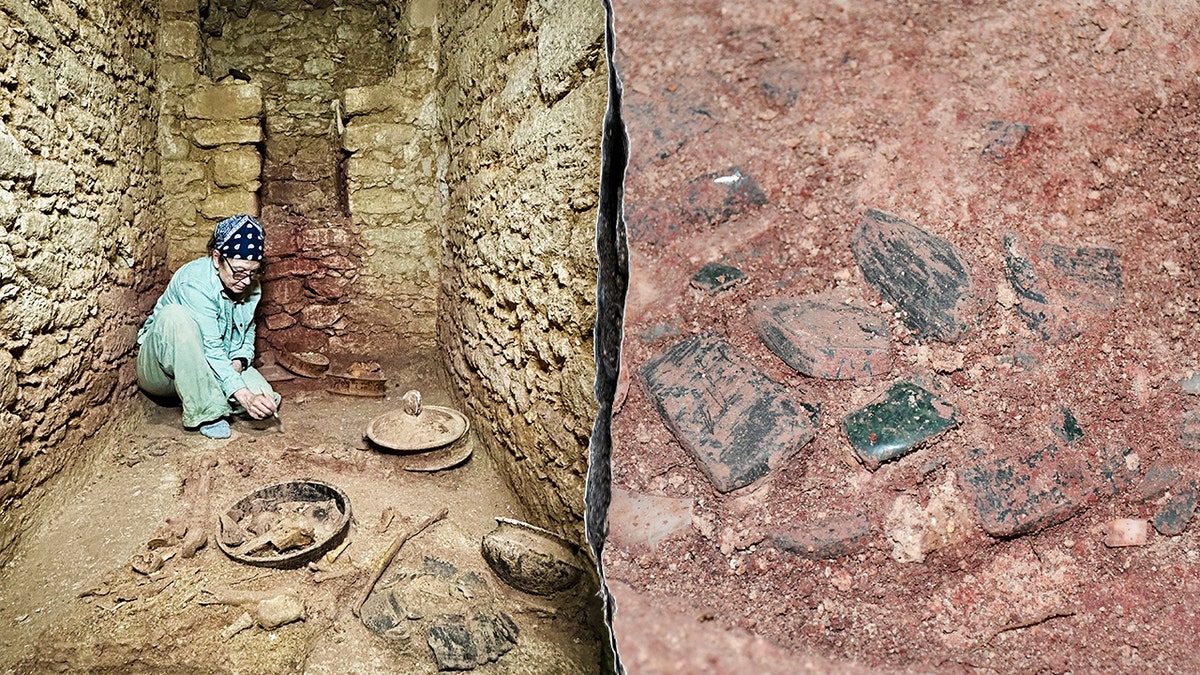
Texas archaeologists uncover ancient king’s tomb in Belize
Texas archaeologists Arlen Chase and Diane Chase recently uncovered the 4th-century tomb of Te’ K’ab Chaak, the earliest ruler of Caracol, a major Mayan city in Belize. (Source: Caracol Archaeological Project; University of Houston)
NEWYou can now listen to Fox News articles!
A Texas archaeologist couple recently unearthed the ancient tomb of a legendary king in Central America — a feat that’s been over 40 years in the making.
Arlen Chase and Diane Chase, both professors at the University of Houston, uncovered the 4th-century tomb at the Caracol archaeological site in Belize. The university shared the discovery on July 10. (See the video at the top of this article.)
Caracol was a major Mayan city established in the 300s A.D. The tomb belonged to Te’ K’ab Chaak, the earliest ruler of the city and the founder of its royal dynasty – and it’s the first confirmed royal tomb found at the site.
UTILITY WORKERS DIGGING TRENCHES STUMBLE UPON 1,000-YEAR-OLD MUMMY WITH INTACT HAIR
“Now in ruins, this metropolis was a major political player in Maya history, dominating the southern part of the Yucatan Peninsula from 560 through 680 AD before its abandonment by 900 AD,” the University of Houston said in its press release.
Teʼ Kʼab Chaak’s tomb was filled with treasures, including 11 pottery vessels and carved bone tubes. Excavators also found a mosaic death mask made of jadeite, along with jewelry made from the same type of gemstone.
Arlen and Diane Chase, shown at right, have led excavations at Caracol, shown at left, in Belize for four decades. (Caracol Archaeological Project; University of Houston)
The Chases are the foremost scholars on Caracol, and this latest excavation is just one of many they’ve conducted.
Their son, Adrian, is also an archaeologist and discovered Caracol’s decentralized water system.
“The true value of the materials is in what they can tell us about the ancient culture.”
Judging from the ruler’s remains, the Chases also found that Te’ K’ab Chaak was 5’7 in height and died at an advanced age. He also had no remaining teeth.
Speaking to Fox News Digital, Arlen Chase called the recently unearthed artifacts “priceless.”

Teʼ Kʼab Chaak’s tomb included jadeite jewelry, pictured at right, as well as elaborate pottery. (Caracol Archaeological Project; University of Houston)
“Professional archaeologists will not put a dollar value on the items they dig up … That being said, the true value of the materials is in what they can tell us about the ancient culture,” the expert described.
ANCIENT CHRISTIAN FIGURINES DISCOVERED IN 1,500-YEAR-OLD DESERT GRAVES
“In this case, most of the individual artifacts are unique, but together they not only tell a story about the individual who once owned them but also enable us to provide a date for the burial.”
Arlen Chase said the artifacts date to 350 A.D. and “include a full range of vessel types for this time period,” including two from the Highlands of Guatemala and shells from the Pacific Ocean.
CLICK HERE TO SIGN UP FOR OUR LIFESTYLE NEWSLETTER
Both these types of treasures, he noted, were the “result of long-distance trade.”
Arlen Chase also confirmed that archaeologists identified the burial “based on the size of his chamber, the presence of jadeite mosaic death mask and earflares, and everything being covered in cinnabar.”

Artifacts in the tomb, particularly the ceramics, show trade connections with central Mexico and the Pacific. (Caracol Archaeological Project; University of Houston)
Diane Chase told Fox News Digital that the ceramic vessels in particular really showed off Teʼ Kʼab Chaak’s status and wealth.
“The two Pacific spondylus shells near his head, the jadeite earflares, the carved jadeite tubular beads, and the mosaic jadeite death mask also show his ability to obtain long-distance prestige items,” she noted.
For more Lifestyle articles, visit foxnews.com/lifestyle
A car trip between Teotihuacan and Caracol today would take over 23 hours. Ancient people would have had to walk at least 153 days to complete the journey, making the burial offerings particularly special.

While excavating the tomb, Diane Chase, shown at left, and her team discovered the remains of a jadeite death mask, at right. It has now been reconstructed. (Caracol Archaeological Project; University of Houston)
Above all, Diane Chase noted that finding a ruler’s burial is “extremely unusual, and important.”
She said, “This is the first one we have discovered within the ancient city of Caracol.”
CLICK HERE TO GET THE FOX NEWS APP
She added, “Even more important, he is the first ruler of the Caracol dynasty with some 30 other rulers following him (according to the hieroglyphic[s]) before the city was abandoned.”
